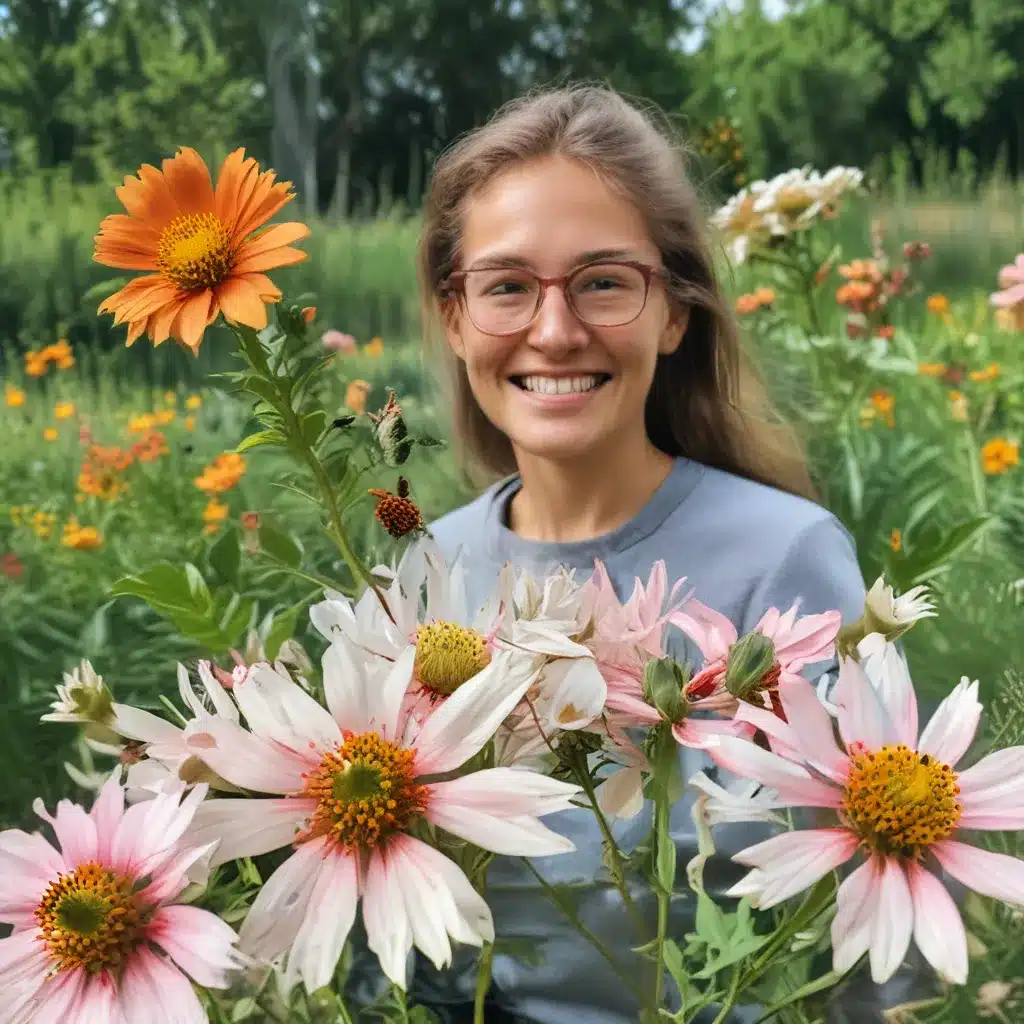
Embracing Botanical Diversity at the Thornapple CSA
As I stroll through the lush fields of the Thornapple Community Supported Agriculture (CSA) service, I’m struck by the sheer diversity of native plants thriving all around me. It’s like stepping into a veritable botanical wonderland – from the vibrant purple blooms of the Spotted Joe-Pye Weed to the delicate white flowers of the Wild Bergamot, each species adds its own unique touch to the rich tapestry of this sustainable ecosystem.
What’s even more remarkable is that the Thornapple CSA is actively working to cultivate and preserve this natural abundance. Unlike many modern farms that focus on monocultures of a few cash crops, the Thornapple team has made it their mission to nurture the incredible variety of native plants found on their land. And let me tell you, their efforts are paying off in spades.
Uncovering the Roots of Botanical Diversity
To better understand the Thornapple CSA’s approach to native plant conservation, I sat down with the resident botanist, Dr. Samantha Greene. As she explained, the key to maintaining a thriving diversity of native species lies in embracing the intricate web of relationships that exist within a healthy ecosystem.
“You see, each native plant species is adapted to its local environment, having evolved over centuries to thrive in the specific soil conditions, climate patterns, and interactions with other organisms found in this region,” Dr. Greene elaborated. “By preserving these plants, we’re not only protecting their individual beauty and ecological roles, but also safeguarding the delicate balance of the entire system.”
According to the Australian Government’s Department of Climate Change, Energy, the Environment and Water, traditional knowledge can play a crucial role in identifying and conserving native plant species, as indigenous communities often possess deep, place-based understandings of local ecosystems.
“The Thornapple CSA has really embraced this approach,” Dr. Greene continued. “By engaging with the knowledge and practices of the indigenous peoples who have inhabited this land for generations, we’ve gained invaluable insights into the medicinal, cultural, and ecological significance of the native plants thriving here.”
Cultivating Connections through Traditional Ecological Knowledge
As researchers from the University of KwaZulu-Natal in South Africa have observed, traditional ecological knowledge (TEK) can serve as a powerful tool for sustainable resource management, as it often encompasses a deep understanding of local species, their life cycles, and the intricate relationships that shape entire ecosystems.
“The Menominee people, who have been stewards of this land for centuries, have shared with us their intimate knowledge of the native plants found here,” Dr. Greene explained. “From the Ostrich Fern, which they’ve traditionally harvested for its edible fiddleheads, to the Black Cohosh, revered for its medicinal properties, each species holds a special significance in their culture and worldview.”
By actively incorporating this traditional knowledge into their conservation efforts, the Thornapple CSA has been able to not only identify and protect a greater diversity of native plants, but also to foster deeper connections between the land, its original caretakers, and the modern-day community of CSA members.
As the United States National Library of Medicine has noted, the integration of traditional botanical knowledge with Western scientific approaches can lead to significant breakthroughs in our understanding of plant-based medicinal and nutritional resources.
“It’s been a truly symbiotic relationship,” Dr. Greene mused. “The Menominee have shared their wealth of traditional knowledge with us, and in turn, we’ve been able to contribute our scientific expertise to help validate and expand upon their understandings of the native plants found here. Together, we’re uncovering new insights that benefit both the land and the community.”
Nurturing Native Plants, Nurturing the Land
As I continue my tour of the Thornapple CSA, I’m struck by the sheer diversity of native plants thriving in every corner of the fields. From the towering Big Bluestem grasses to the delicate nodding blooms of the Wild Columbine, each species seems to have found its perfect niche within this vibrant ecosystem.
“That’s the beauty of nurturing native plants,” Dr. Greene remarked, gesturing to the lush landscape around us. “When you create the right conditions for them to thrive, they’ll naturally establish a rich, balanced community that supports an abundance of life – from pollinating insects to migratory birds to the very soil microorganisms that sustain the whole system.”
Indeed, the Thornapple CSA’s dedication to preserving native plant diversity has had a ripple effect, attracting a wide array of other native species that play vital roles in the overall health and resilience of the land. It’s a testament to the power of holistic, ecological thinking – one that recognizes the intrinsic value of every living being, from the smallest microbe to the mightiest tree.
Sowing the Seeds of a Sustainable Future
As our tour draws to a close, I can’t help but feel a deep sense of awe and admiration for the work being done at the Thornapple CSA. In a world where industrialized agriculture continues to erode the natural diversity of our landscapes, this community-driven initiative stands as a shining example of what’s possible when we embrace the wisdom of traditional knowledge and the wonder of native plants.
“Our goal is to not only nourish our community with wholesome, sustainably grown produce,” Dr. Greene said with a smile, “but also to cultivate a deep appreciation and stewardship for the incredible natural heritage that we’ve been entrusted to care for. By nurturing the native plants that call this land home, we’re sowing the seeds of a more vibrant, resilient, and ecologically balanced future.”
As I prepare to depart, I can’t help but feel inspired by the Thornapple CSA’s unwavering commitment to biodiversity. It’s a reminder that when we work in harmony with the land and its original caretakers, the rewards can be truly boundless. Here’s to the Thornapple CSA and the countless other community-driven initiatives that are Nurturing Native Plants and Blooming with Biodiversity!



